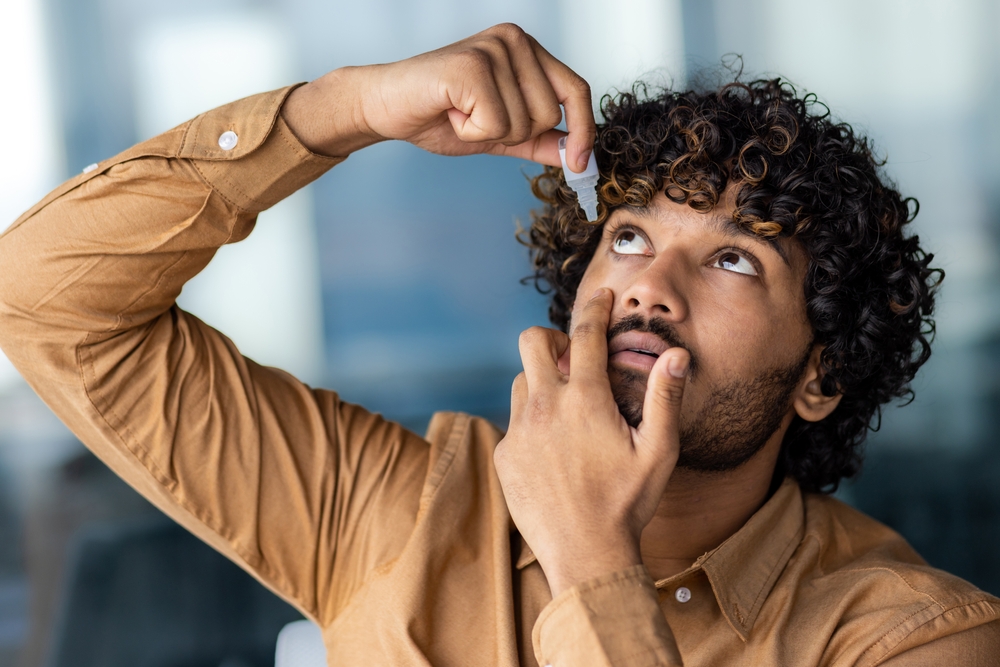Do you want crisper, sharper vision? Are you tired of waking up every morning and fumbling around for your glasses so you can see your phone?
There’s a better way: LASIK. LASIK can be a life-changing experience, giving you total visual freedom from glasses and contact lenses.
In addition, LASIK can also give you better vision than you ever had, even when wearing contact lenses or glasses! The procedure is very low-risk and highly effective, with over 95% of patients achieving 20/20 vision or better.
LASIK also has a fast recovery, meaning you can return to your favorite activities almost immediately. Do you love to travel?
LASIK won’t stand in your way of going to new places. Traveling will be much easier, especially if you’ve recently had LASIK.
Once you’ve fully recovered after LASIK, travel becomes much more accessible. Imagine packing without extra contact lenses, worrying about remembering your spare glasses, or carrying another bottle of contact solution.
It sounds small, but these are the kinds of things that make your life a lot better. However, there are a few things to remember when traveling after getting LASIK.
Keep reading to learn how to travel better after LASIK with these 8 tips!
1. Wait Three Days for Domestic Travel

Most patients find that they can return to work the day after having LASIK. Many also feel well enough to travel after this point.
However, most LASIK surgeons recommend waiting at least three days before traveling domestically, either by car or by plane. Some surgeons may allow some patients to travel shorter distances sooner, but as a general rule, it’s best to wait at least three days.
Of course, talk to your LASIK surgeon at South Texas Eye Institute to determine when you’ll be cleared to travel after having LASIK.
2. Wait Two Weeks for International Travel
After having LASIK, you’ll need to wait at least two weeks before traveling internationally. LASIK surgeons recommend this because you should stay close to your eye doctor or other healthcare services in the US if you have any LASIK complications.
Although complications are rare, it’s vital to have them treated promptly. For this reason, most LASIK surgeons recommend waiting at least two weeks before traveling internationally to be safe. However, make sure your surgeon clears you before traveling.
3. Wait Until After Your First Follow-Up Appointment to Drive

You should be able to fly as soon as you can travel again after having LASIK. You should also be able to drive 24 hours after the vision correction procedure.
However, when your LASIK surgeon clears you to drive will often depend on the individual patient. Your vision may still be adjusting and fluctuating.
You are not allowed to drive yourself home after having LASIK, as your vision is not stable enough. You must have someone to drive you home. You also need someone to drive you to your first follow-up appointment at South Texas Eye Institute.
However, your LASIK surgeon will likely clear you to drive at your first follow-up appointment, which usually takes place the day after your LASIK procedure.
At this point, your eyes will still need rest, so it may not be wise to go on a long road trip alone. If you travel by car, make sure someone else is with you who can split up the driving.
4. Watch Out for Dry Eye on Airplanes
Flying on airplanes isn’t a problem after you have LASIK surgery, and you should be able to do so safely. But the air on planes can be rather dry, and your eyes are more likely to become dry when you’re recovering from LASIK.
Make sure you have artificial tears (approved by your eye doctor) to prevent your eyes from getting too dry, along with your prescribed post-surgical eye drops.
5. Stay Hydrated
Another way to combat dry eye and promote healing is to stay hydrated. When traveling, make sure you drink plenty of water and fluids with electrolytes.
This is especially important if traveling a long way on a plane or visiting a much drier climate. But no matter where you travel, staying hydrated is essential.
6. Get Enough Rest
Sleep is essential for healing after any procedure, including LASIK surgery. If you travel, make sure you get enough sleep before and during your trip. Feel free to take a nap on the plane, but if you do this, you may notice that your eyes feel dry or irritated. Use eye drops or artificial tears to combat any irritation or dryness you may experience.
7. Wear Eye Protection
Your doctor will probably give you eye shields to wear at night for the first week after having LASIK. Make sure you pack these and use them when you travel.
Also, wear sunglasses whenever you’re outdoors. Your eyes will be more sensitive to UV radiation when they’re healing, and being outside may make them feel drier, making sunglasses the perfect solution.
Be sure any sunglasses you wear will block out 99% or more UV rays. Look for a tag or sticker that says this when buying them.
8. Avoid Eye Fatigue

Try to rest your eyes on your travels. In addition to getting plenty of sleep, you should limit how much time you spend looking at a screen. If you need entertainment while flying or driving a long way, consider listening to podcasts or audiobooks.
But if you need to use a screen for work, watch how long you look at them and follow the 20-20-20 rule. This rule states that you take a break from the screen every 20 minutes to look at an object 20 feet away for 20 seconds.
This allows your eyes time to refocus so they don’t get fatigued. Practicing the 20-20-20 rule is also an excellent time to use eye drops or artificial tears to prevent dryness.
Are you ready to have better vision while traveling? Schedule your LASIK consultation at South Texas Eye Institute in San Antonio, TX, today to find out if you could be a good LASIK candidate! Haven’t you waited long enough for visual freedom?

